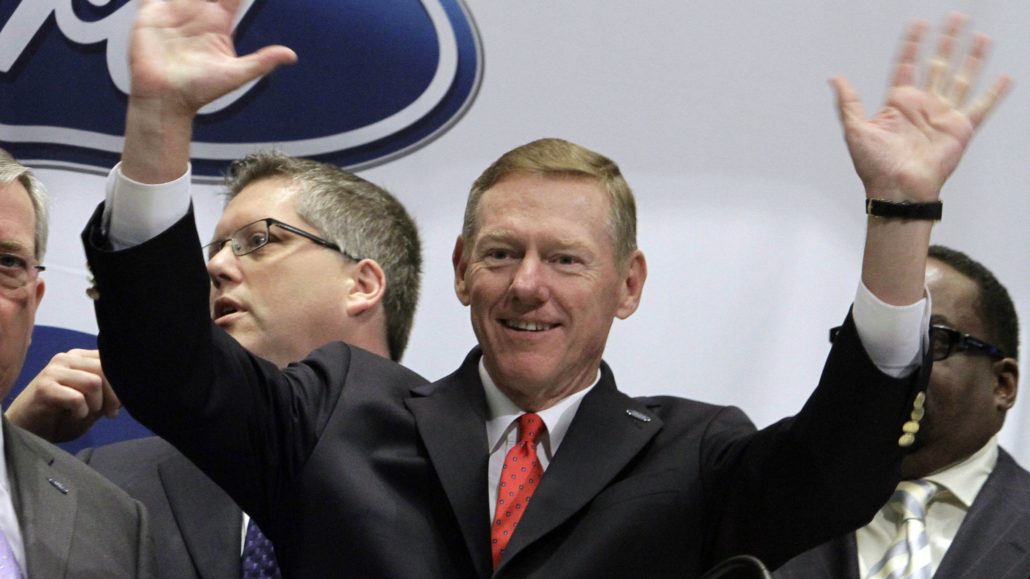
Ford Motor Company CEO Alan Mulally engineered the comeback of his embattled company two years ago without a taxpayer-funded bailout, unlike GM and Chrysler, and that gives him bragging rights where it matters.
He did not resort to “tricks of the trade” or accounting gimmicks.
He relied on fundamental principals he learned and refined over a 37-year career at Boeing.
If you are the aspiring professional, the stressed-out small business owner, or the struggling entrepreneur trying to get your business back on track after a bleak summer quarter, take a page or two, maybe even a third, from Mulally’s playbook.
Here is what he did. Ask yourself if his approach can work for you.
I think it can.
He became single-minded; he had a one-track mind: rescue Ford Motor Company. Bankruptcy did not fit his game plan. Failure or lackluster growth should not fit yours.
Become single-minded about your business, your career. Your goal is to prosper – achieve financial stability.
Be prepared to do what it takes! Take some time and recall what, or who it was, inspired you to become a professional or to launch your business.
Have a plan – as Alan did. He kept it simple, “too simple” according to his critics. Mulalley’s turnaround strategy was condensed to a business card he passed out to everyone. Write three to five key points needed to achieve your goals and share them with your team, like Mulalley did. His success spoke for itself. Look at your plan. Does it define who you are, what you plan to do, or how you plan to do it? Does it offer a timeline (when)? Does it identify the resources you will need? Does it contain the three to five goals you and your team will pursue daily? Now you have a framework, the architecture. Hang the other bits and pieces on it and get started.
Be sincere. Be genuine in your interactions with others. Have a focused intensity that helps others in your organization or business understand where they fit, the roles they will play, and how you plan to rebuild and return your business to profitability.
Avoid the conventional roadblocks i.e., allowing others to tell you what won’t work because it did not work for them; believing that if an idea is too bold, perhaps you should avoid the risk. This is your career, your business, your opportunity for success. You are its greatest asset and you either believe in yourself or you don’t. Choose!
If certain practices are inefficient, eliminate them. Set aside non-productive relationships. You are only carrying someone else’s baggage. If your leaders or managers are not performing, meet with them. Be honest. Show them the gap between their performance and your expectations. Discuss how to bridge the gap and hold them accountable. One more thing: whatever you mutually agree upon regarding performance standards, put it in writing and provide each individual a copy.
Make satisfied customers your focus. They should be at the center of your plan. Meet their needs, solve their problems and they will stick with you.
Communicate clearly with team members, managers, leaders, and, most of all, with your customers. Listen, ask questions, and keep your responses content rich.
The best plans can be modified, and that is just good business sense. Conditions may change. The process you employ may appear boring or monotonous, but if it is producing results, keep your business on course. Be relentless and be consistent. Invest in your product especially if you are your principal asset. Your plan does not have to be novel; it has to produce results.
Look at new, untapped markets. This is your future; new markets keep you competitive.
On a daily basis, execute the plan. Execute! Execute! Execute!
Be comfortable talking about your products, your service, the opportunity you provide to create a solid financial foundation. Know your industry. This inspires confidence with customers and with those who may be looking for options.
Alan Mulally, employing these basic rules, turned his company around. His approach contained no radical techniques. He adhered to a few basic principles and maintained a singular focus on outcomes. That makes sense to me. Now it’s your turn.

